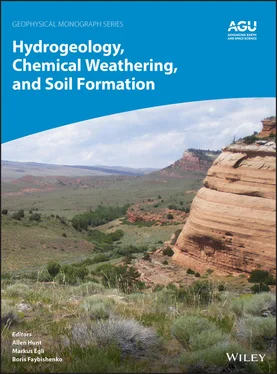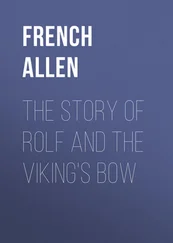111 Phillips, J. D. (1989). An evaluation of the state factor model of soil ecosystems. Ecological Modelling, 45, 165–177.
112 Phillips, J. D. (1993a). Progressive and regressive pedogenesis and complex soil evolution. Quaternary Research, 40, 169–176.
113 Phillips, J. D. (1993b). Stability implications of the state factor model of soils as a nonlinear dynamical system. Geoderma, 58, 1–15.
114 Phillips, J. D. (1998). On the relations between complex systems and the factorial model of soil formation (with discussion). Geoderma, 86, 1–21.
115 Phillips, J. D. (2001). The relative importance of intrinsic and extrinsic factors in pedodiversity. Annals of the Association of American Geographers, 91, 609–621.
116 Phillips, J. D. (2013). Nonlinear dynamics, divergent evolution, and pedodiversity. In J. J. Ibãnez & J. Bockheim (Eds.), Pedodiversity (pp. 59–78). Boca Raton, Florida: CRC Press.
117 Phillips, J. D. (2017). Soil complexity and pedogenesis. Soil Science, 182, 117–127.
118 Polynov, B. B. ( 1935). Types of weathering crust. Transactions of the Third International Congress of Soil Science, Oxford, England, 1935, 1, 327–330.
119 Polynov, B. B. (1937). The cycle of weathering. Translated from Russian by A. Muir; foreword by W. G. Ogg. London: Thomas Murby.
120 Quijano, J., & Lin H. (2014). Entropy in the critical zone: A comprehensive review. Entropy, 16, 3482–3536.
121 Rasmussen, C., Pelletier, J. D., Troch, P. A., Swetnam, T. L., & Chorover, J. (2015). Quantifying topographic and vegetation effects on the transfer of energy and mass to the critical zone. Vadose Zone Journal, 14(11). doi: https://doi.org/10.2136/vzj2014.07.0102
122 Rasmussen, C., Southard, R. J., & Horwath, W. R. (2005). Modeling energy inputs to predict pedogenic environments using regional environmental databases. Soil Science Society of America Journal, 69, 1266–1274.
123 Rasmussen, C., & Tabor, N. J. (2007). Applying a quantitative pedogenic energy model across a range of environmental gradients. Soil Science Society of America Journal, 71, 1719–1729.
124 Regan, E. J. (1977). A natural energy basis for soils and urban growth in Florida (master’s thesis). University of Florida.
125 Richter, D. deB., & Yaalon, D. H. (2011). “The Changing Model of Soil” revisited. Soil Science Society of America Journal, 76, 766–778.
126 Robinson, G. W. (1936). Normal erosion as a factor in soil profile development. Nature, 137, 950.
127 Rode, A. A. (1947). The soil‐forming process and soil evolution. Jerusalem: Israel Program for Scientific Translations (Translated into English by J. S. Joffe, 1961).
128 Roy, A. G., Jarvis, R. S., & Arnett, R. R. (1980). Soil‐slope relationships within a drainage basin. Annals of the Association of American Geographers, 70, 397–412.
129 Ruhe, R. V. (1960). Elements of the soil landscape. Transactions of the Seventh International Congress of Soil Science, Madison, 4, 165–170.
130 Ruhe, R. V. (1975). Review of “Pedology, Weathering and Geomorphological Research” by P. W. Birkeland. Geoderma, 14, 176–177.
131 Ruhe, R. V., & Walker, P. H. (1968). Hillslope models and soil formation: I. Open systems. Transactions of the Ninth International Congress of Soil Science, Adelaide, 4, 551–560.
132 Runge, E. C. A. (1973). Soil development sequences and energy models. Soil Science, 115, 183–193.
133 Saco, P. M., & Moreno‐de las Heras, M. (2013). Ecogeomorphic coevolution of semiarid hillslopes: Emergence of banded and striped vegetation patterns through interaction of biotic and abiotic processes. Water Resources Research, 49, 115–126.
134 Salvador‐Blanes, S., Minasny, B., and McBratney, A. B. (2007). Modelling long‐term in situ soil profile evolution: Application to the genesis of soil profiles containing stone layers. European Journal of Soil Science, 58, 1535–1548.
135 Sasscer, D. C., Jordan, C. F., & Kline, J. R. (1971). A mathematical model of tritiated and stable water movement in and old‐field system. In D. J. Nelson (Ed.), Radionuclides in Ecosystems. Proceedings of the Third National Symposium on Radioecology (pp. 915–923). CONF‐710501‐P1, US Atomic Energy Commission.
136 Schaetzl, R. J. (2013). Catenas and soils. In J. Shroder (Ed. in Chief), Pope, G.A. (Ed.), Treatise on geomorphology: Vol. 4. Weathering and soils geomorphology (pp. 145–158). San Diego, CA: Academic Press.
137 Shaw, C. F. (1930). Potent factors in soil formation. Ecology, 11, 239–245.
138 Shepard, C., Schaap, M. G, Pelletier, J. D., & Rasmussen, C. (2017). A probabilistic approach to quantifying soil property change through time integration of energy and mass input. SOIL, 3, 67–82.
139 Simonson, R. W. (1959). Outline of a generalized theory of soil genesis. Soil Science Society of America Proceedings, 23, 152–156.
140 Simonson, R. W. (1968). Concept of soil. Advances in Agronomy 20, 1–47.
141 Sommer, M. (2006). Influence of soil pattern on matter transport in and from terrestrial biogeosystems: A new concept for landscape pedology. Geoderma, 133, 107–123.
142 Sommer, M., & Schlichting, E. (1997). Archetypes of catenas in respect to matter a concept for structuring and grouping catenas. Geoderma, 76, 1–33.
143 Stephens, C. G. (1947). Functional synthesis in pedogenesis. Transactions of the Royal Society of South Australia, 71, 168–181.
144 Stockmann, U., Minasny, B., & McBratney, A. B. (2011). Quantifying processes of pedogenesis. Advances in Agronomy, 113, 1–74.
145 Suess, E. (1875). Die Entstehung der Alpen. Wien: Wilhelm Braunmüller.
146 Suess, E. (1883–1909). Das Antlitz der Erde, 5 vols. Wien: Gustav Freytag.
147 Tandarich, J. P., Darmody, R. G., Follmer, L. R., & Johnson, D. L. (2002). Historical development of soil and weathering profile concepts from Europe to the United States of America. Soil Science Society of America Journal, 66, 335–346.
148 Targulian, V. O., & Sokolova, T. A. (1996). Soil as a bio‐abiotic natural system: A reactor, memory and regulator of biospheric interactions. Eurasian Soil Science, 29, 34–47.
149 Temme, A.J.A.M., & Vanwalleghem, T. (2016). LORICA – A new model for linking landscape and soil profile evolution: Development and sensitivity analysis. Computers & Geosciences, 90, 131–143.
150 Troeh, F. R. (1964). Landform parameters correlated to soil drainage. Soil Science Society of America Proceedings, 28, 808–812.
151 Vanwalleghem, T., Stockmann, U., Minasny, B., & McBratney, A. B. (2013). A quantitative model for integrating landscape evolution and soil formation. Journal of Geophysical Research: Earth Surface, 118, 331–347.
152 Verboom, W. H., & Pate, J. S. (2013). Exploring the biological dimension to pedogenesis with emphasis on the ecosystems, soils and landscapes of southwestern Australia. Geoderma, 211–212, 154–183.
153 Vernadsky, V. I. (1926). Biosfera. Leningrad: Nauchoe Khimikoteknicheskoe Izdatelstvo.
154 Vernadsky, V. I. (1929). La biosphère. Paris: Félix Alcan.
155 Vernadsky, V. I. (1998). The biosphere, translated by David B. Langmuir. Heidelberg: Springer‐Verlag.
156 Volobuyev, V. R. (1963). Ecology of soils. Academy of Sciences of the Azerbaidzan SSR. Institute of Soil Science and Agrochemistry. Israel Program for Scientific Translations, Jerusalem (Translated into English by A. Gourevich, 1964).
157 Vreeken, W. J. (1973). Soil variability in small loess watersheds: Clay and organic matter content. Catena, 2, 321–336.
158 Wackett, A. A., Yoo, K., Amundson, R., Heimsath, A. M., & Jelinski, N. A. (2018). Climate controls on coupled processes of chemical weathering, bioturbation, and sediment transport across hillslopes. Earth Surface Processes and Landforms, 43, 1575–1590 doi: 10.1002/esp.4337
Читать дальше












